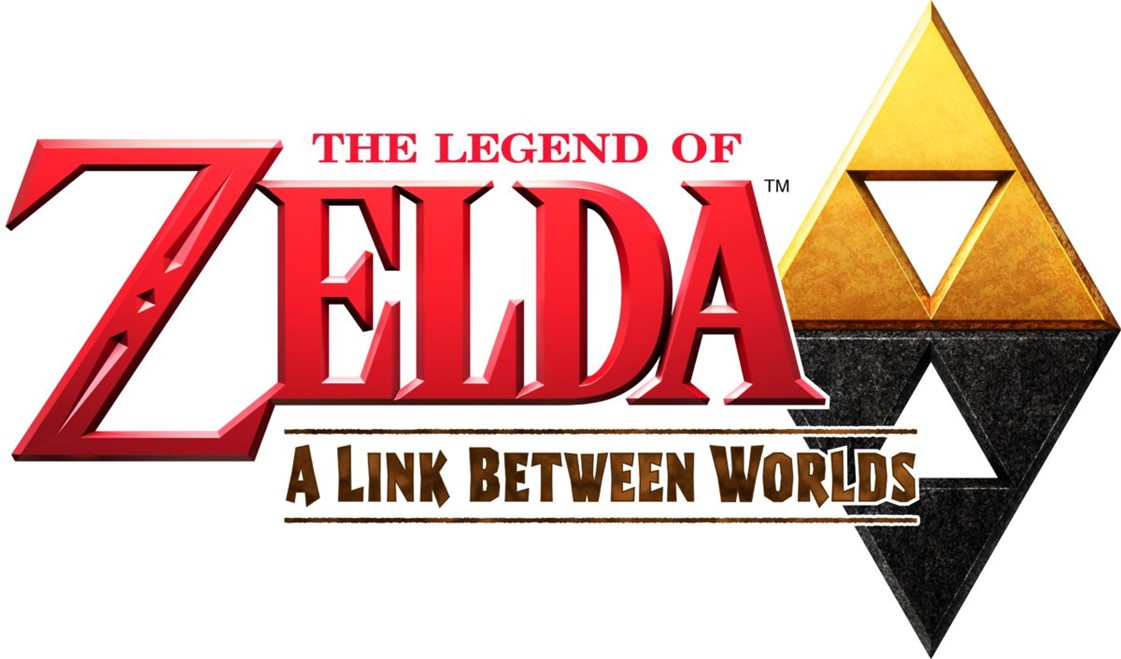
Talk about The Legend of Zelda: A link between worlds(2013)
A link between worlds is a third-person top-down ARPG developed by Nintendo in 2013 on the 3DS platform.
When we encounter the world of Nintendo games, we gradually find that these fun, young and old games are composed of several ingenious gameplay ideas, for example, "everything can be swallowed" in Kirby and the Forgotten Land or Mario "with the mysterious hat", or Link in A Link Between Worlds, who can walk freely between walls. These ideas run throughout the game, they are vivid and tense, with extremely high adaptability and great extensibility. The combination of such an idea and elements in the environment brings players unique and irreplaceable fun. So next, let's talk about A Link Between Worlds and its unique gameplay fun.
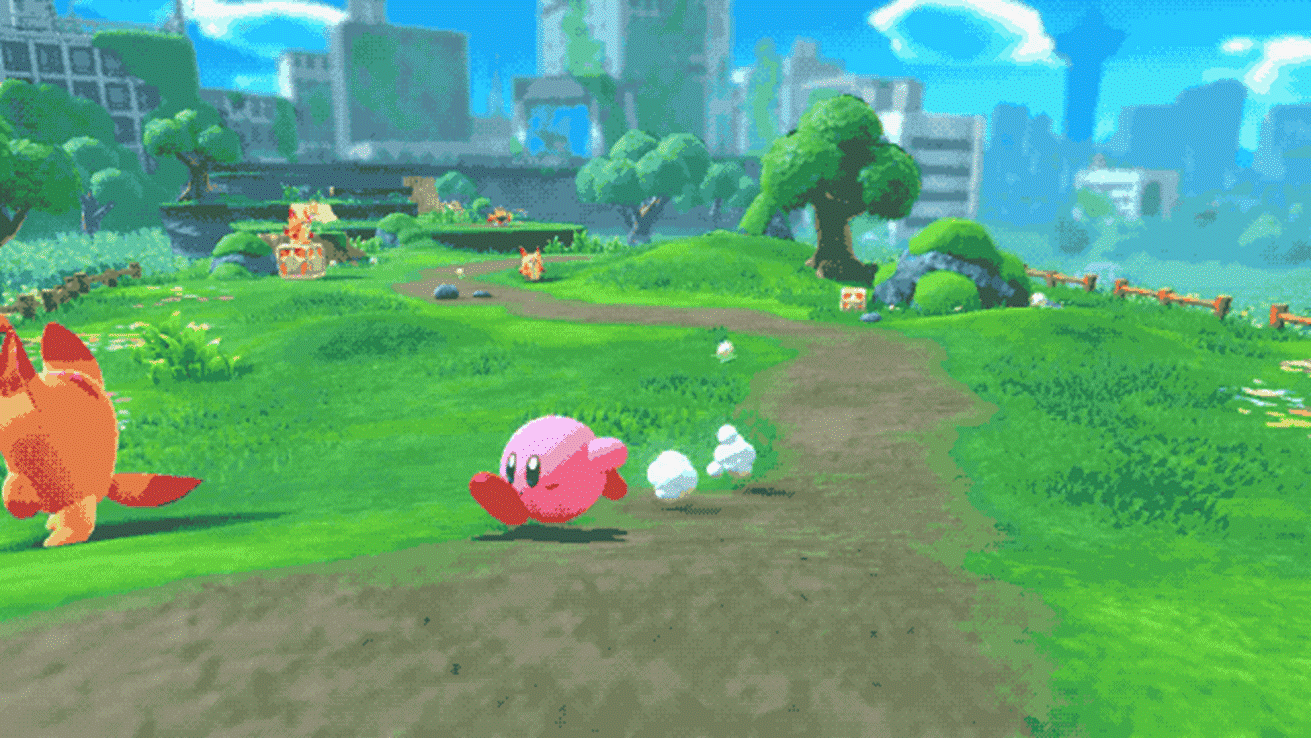
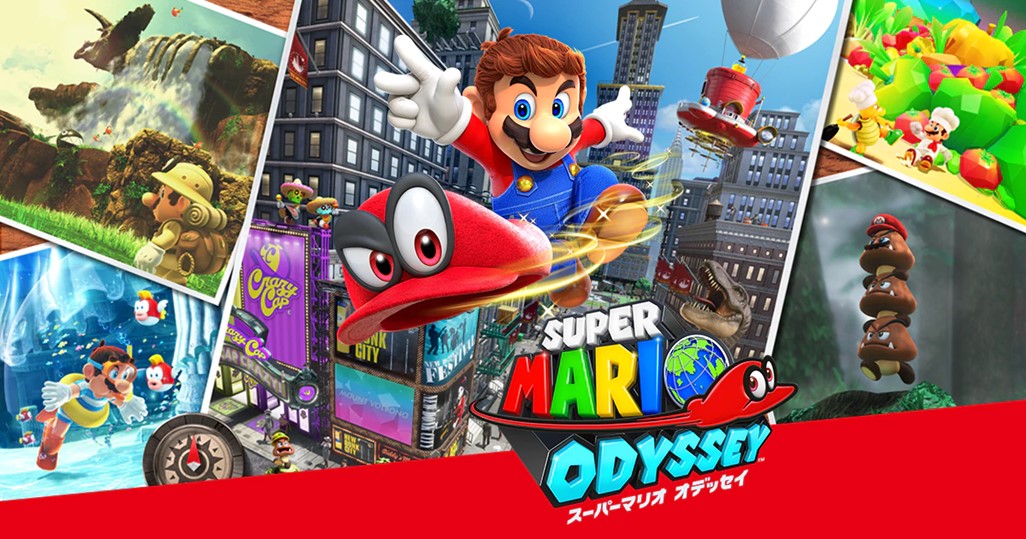
Playmode
This is a traditional 2D Zelda game, which has almost all the characteristics of previous traditional Zelda works, such as the theme of growing up and saving the princess, the focus and emphasis on exploration, the dungeon design where adventure and exploration coexist, the familiar organs and bosses, the table world and the inner world. This all means that this is a very classic work of gaming.
However, in addition to these classic elements, the biggest feature of this work is that Link gained the ability to look into the 2D space of the wall as long as he stand next to a wall, thus creating a unique play content.
1. Ignore the damage
2. Create new pathways
3. Provide a new way to move props
4. As a plot connection
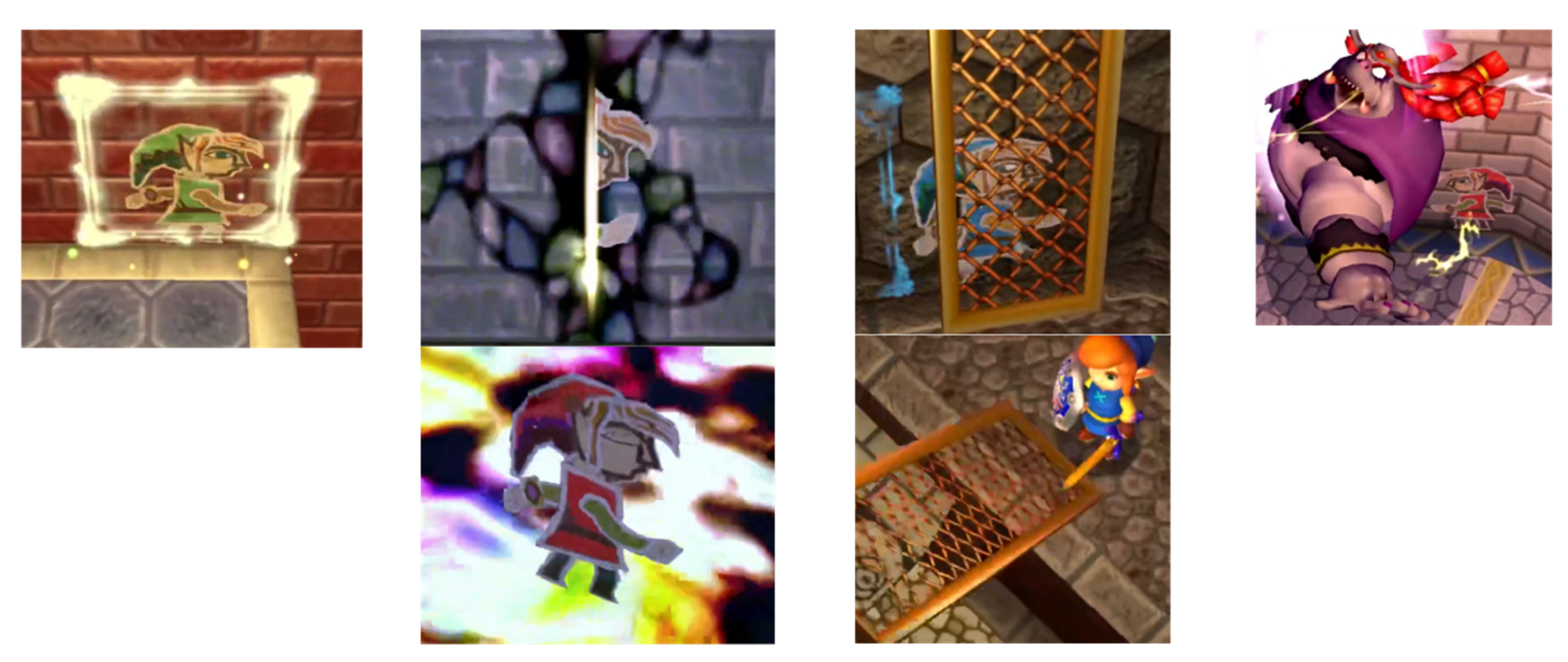
At the same time, in order to limit the player, the designers bound together the mural ability and magic slot. Once the magic slot is depleted, then Link will immediately leave the wall, waiting for the magic slot to be restored again. In addition, it is conceivable that once Link becomes a 2D mural, he will not be able to attack or use any skills, which is obviously a design necessary for the balance of the game.
So the character will use this ability and all kinds of classic props that has appeared in the Zelda series along the adventure. Link may walk through seven different styles of shrines, use various types of props to solve puzzles, defeat bosses and rescue the seven gods as well as Zelda Princess.
Fun
So what is fun about these Zelda games?
1. They all have unique gameplay that distinguishes them from other titles in the same series
For example, the mural ability in A Link Between Worlds; the mask ability in Mezura's Mask, etc.
2. Constantly bring new mechanics and create new experiences
Take the Desert Temple as an example, each puzzle section has their changing flow from teaching to expansion, as shown below.
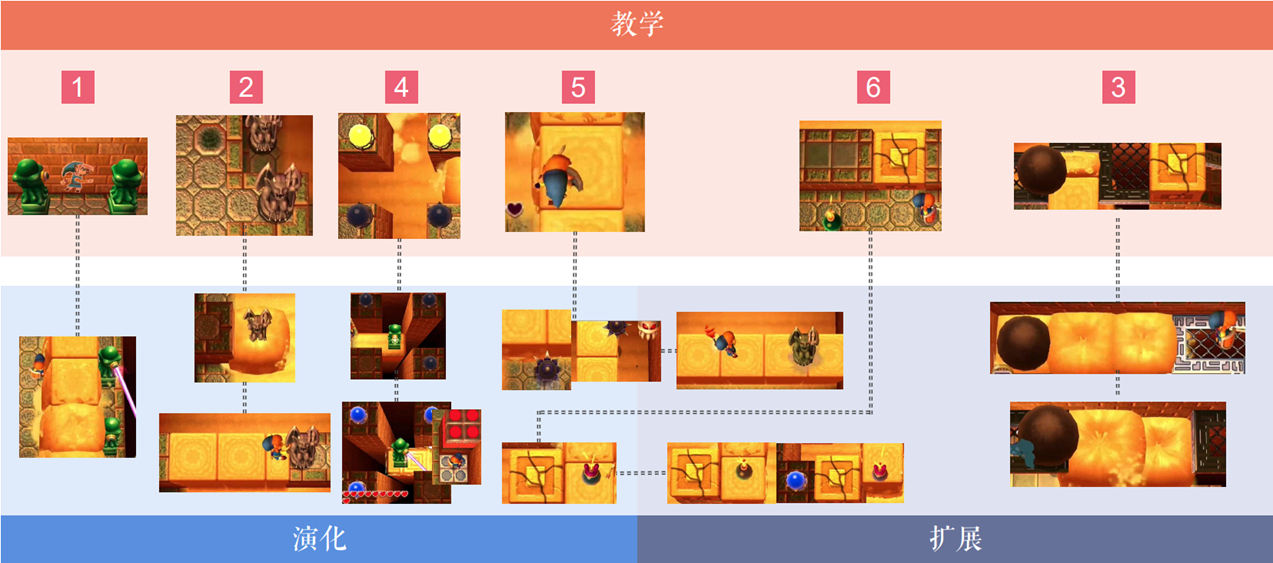
3. Reasonable emotional rhythm allows players to enter a state of mind flow
Just as the designers of the Super Mario series proposed the narrative structure of game design, there is a similar structure in most of Zelda's mazes.
4. Numerous proven classic gameplay and classic boss battles, such as hitting the ball back and forth with bosses and using elemental reactions to construct pathways.
5. Vivid plot with special sound effects.
6. A strong sense of purpose
For example, in A Link Between Worlds, the interface of saving the seven gods will appear after passing the instruction level.
7. The strong sense of immersion in the plot, such as the occasional call from princess Zelda
Limitations
But there are also the limitations that come with this type of gameplay.
1. Players seem to be able to customize the experience, but the freedom of exploration is very low
When we completely dismantled the level structure of A Link Between Worlds, we found that although players can freely choose the order of maze challenges, but the structure of each maze is almost linear.

2. Reliance on external drivers to drive the game, such as cues to the process
3. The lack of depth. The content of game is completely presented in the main line, while free exploration is not enough
4. The repetition of experience, from today's perspective seems to lack a sense of surprise
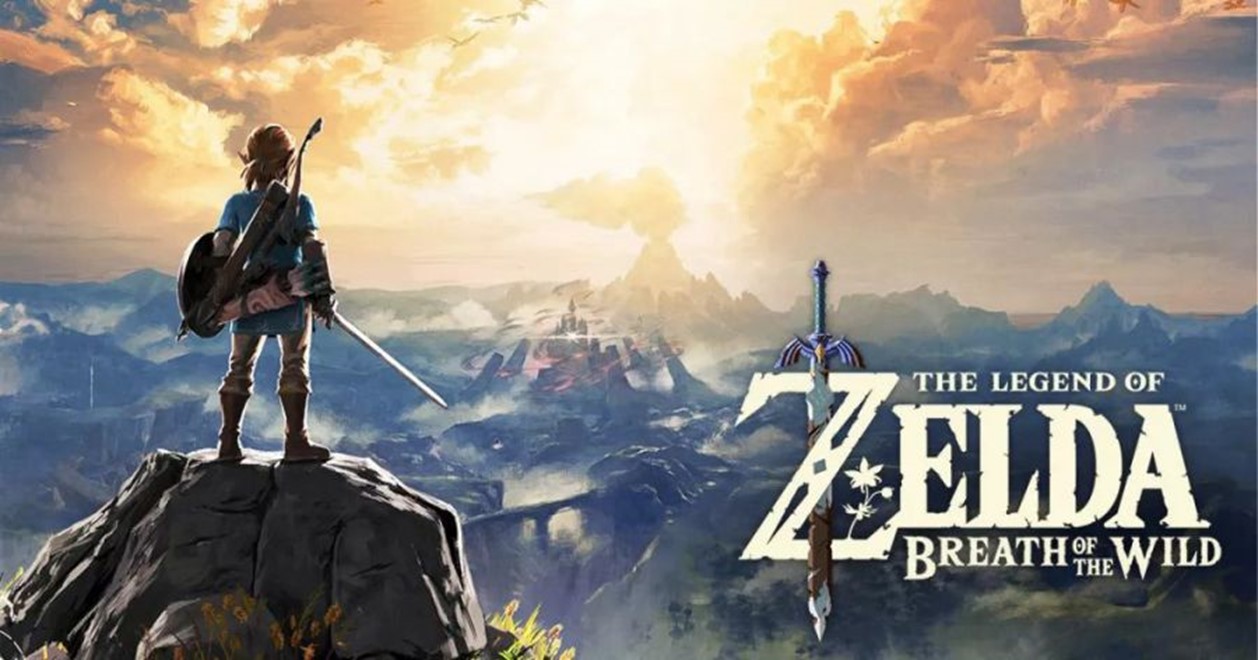
Talk about The Legend of Zelda: Breath of the Wild(2018)
When we talk about Breath of the Wild, it seems that all the previous laws no longer work. This is a new, landmark open-world game that is no longer the same as all the previous Zelda's. We find that the traditional hammer, hook lock, and other classic props are replaced in this one by the skills of the Stone of Shikar, and Breath of the Wild seems to have become something completely new.
Open-world Design
The Breath of the Wild's open-world experience is unmatched in the gaming world due to the open-world design focusing on how the player traverses the terrain to the point that the keyword most closely associated with The Legend of Zelda: Breath of the Wild, is “open-world”. So how did Breath of the Wild design the perfect open-world experience? Breath of the Wild perfected the design by considering four key points:
(a) Non-compulsory mission
In this game, missions are more as guides for the players rather than mandatory experiences. What a player must do is to complete the tutorial and defeat Gaynon. The rest of the experience is up to the player to decide and customize their own settings. You can even ignore the hints and feel the fun of the game in an unknown situation. There is no forced guidance in the game, even in the initial terrace where players do not understand anything. Nintendo that develops Zelda games let the players understand and feel an interest in the game themselves.
(b) Gameplay close to reality
The gameplay is perfectly close to reality, increasing the sense of immersion. When Link initially wakes up from the cave and has no equipment, he picks up apples on the roadside and fallen branches to replenish his strength as props; this experience perfectly echoes the initial appearance of human beings in the world when they are also developed step by step using the available resources. In addition, the game perfectly simulates the natural world experience, such as slippery rocks, the inability to climb smoothly on a rainy day, etc. Although these settings are not displayed with a prompt box, they enable the program to immerse the player in real-life experience.
(c) Perfect character climbing design
Breath of the Wild offers complete freedom to the player, with a perfect character climbing design that theoretically allows the player to reach anywhere. The designers seem to be telling players where the world's borders are from the start, and everywhere else can be explored freely. But players also seem unable to go to every corner at the beginning but are limited by stamina, which can be a very clever design. Players are only restricted by their abilities, rather than being forced to drop a goal because of an air wall or other external element, without hindering the player's goal, improving stamina or refining the path. This design language is common in other Zelda's games.
(d) Invisible exploration order
Game designers do not expect players to be able to walk everywhere from the very beginning but prefer most players to follow an invisible exploration order. Setting higher terrain implies that players avoid exploring dangerous areas initially but instead start with simple, easy-to-reach places. There are times when the world environment is also a hindrance, with settings such as snowy mountains and rocky terrain adding to the difficulty of exploration, as players are forced to keep an eye on their state in these dangerous environments until they have acquired equipment or props that work with the environment.
In addition, when the developers were discussing the map design, they said that they would design higher barriers at the border of each area so that the players could not be aware of the design inside the area at the very beginning but take this as a motivation to overcome obstacles.
So this is the reason why people are so willing to play this game. Even years after the game was released, players are still exploring the world, trying to fly the walls, trying to solve Gaynon faster, and even going out of their way to test the world for various bugs. Therefore, the groundbreaking open-world design is the greatest appeal of this game.
Fun
So where does the fun of Breath of the Wild come from?
1. Perhaps it comes from the game itself, the surprise of the player who finds that his experience can be used to solve the game's puzzles.
2. It also comes from the challenge to the developers. Although the developers and the players should be on the same side, when the players find themselves a deviant solution, they will think they have beaten the developers. Such a victory is positive and enhance the confidence of the players for themselves and the game itself.
3. Perhaps it also comes from the game's touching redemption story that spans the previous year and cheats players out of tears.
Conclusion
In short, Breath of the Wild provides players with rules rather than gameplay, and gameplay will be explored by players on their own initiative. Players who like to solve puzzles might explore hidden temples from just words, and players who like to fight might think about repeatedly challenging various centaurs. The Legend of Zelda: Breath of the Wild offers a unique experience for each type of player, shaped by the player's choices. This is what I think makes Breath of the Wild so memorable.
Going back to the Legend of Zelda series, Breath of the Wild seems to have outgrown all the characteristics of traditional Zelda games, yet still retains the original design philosophy.
-A goal establishment
-An idea of gameplay
-Exploration, adventure and maze puzzle solving
-The theme of the growth of the brave
These design philosophies formed the Zelda series and are reflected in works such as Ocarina of Time and Twilight Princess.
Thanks for all the surprises the Zelda games brings!